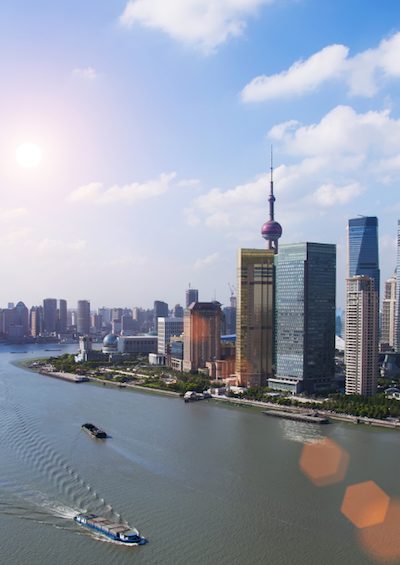Trade as a Confidence-Building Measure in East Asia
The future of East Asia depends upon the ability of its nations to jump over the shadows of the past.
November 17, 2014

The world debate may be preoccupied with “hot” crises in the Middle East, ISIS, Eastern Ukraine and fighting Ebola. Yet, tensions in East Asia have not subsided.
Even though the region has seen quite a remarkable level of peace ever since China’s war against Vietnam in 1978-79, there is a new uncertainty.
The major cause of past progress was the security guarantee provided by the United States, coupled with China’s intent to “rise“ peacefully. Another key stabilizing factor has been the gradual economic integration among the countries of Southeast Asia and in East Asia.
Together, this has brought slow, but continuous accommodation of one another’s political interests and objectives across Asia.
If there is talk now of rising tensions in East Asia and a growing apprehensiveness, then usually it is China which is seen as responsible. More precisely put, the tensions are seen as a consequence of China’s rise.
China asserts its power
As things stand, it appears that whenever a neighbor of China acts in a way that may be interpreted in Beijing as an even minor provocation of China, China will assert itself robustly and change the overall situation to its advantage.
To give but one example, when the Philippine navy tried in May 2013 to expel Chinese fishermen from the Scarborough Shoal reef, 130 nautical miles from the Philippine coast (and 550 miles from the Chinese coast), the Chinese navy intervened. Today, the reef is de facto in Chinese hands.
It seems that the way in which China’s leaders regard the future role of their country in the region and the world has changed. Both the “peaceful rise” rhetoric and statements made only ten years ago to express the intention that China’s rise will remain compatible with the interests of its partners seem to have made room for a new way of thinking.
This issue loomed large again in the background of the recently concluded APEC Summit. For all the official focus on economic cooperation, geopolitical and strategic issues always lurk large, even though they are not on the “official” agenda.
While this is no surprise to Asians, what may surprise them is how much this is also a matter of global interest. The reason for that is twofold: First, looking ahead, Asia may eventually become the most important part of the global economy.
And second, China already has intense economic relationships all over the globe, including in Europe and the United States. That’s why other nations outside of Asia are greatly concerned if China’s relationship with the rest of the continent remains unsettled.
One key question at this juncture is what the other countries in Asia can do to keep their relationship with the Chinese on a constructive footing and to do their part in securing the future prosperity of Asia.
Forging new bonds
It is here that the European example and the importance of relying on trade relations as a key confidence-building measure may be of use. For real progress to be made, countries have to be able and willing to jump over the shadows of the past. That is no easy feat.
However, strengthened trade relations have the advantage of incentivizing countries in that critical regard. They offer up meaningful progress in people’s daily lives through greater economic integration across the entire region.
At a time when progress towards freer global trade at the multilateral level move at best at a glacial pace, bilateral and regional trade deals assume a bigger importance.
And despite general concerns that this may lead to a fracturing of the global trade landscape, certainly with regard to Asia, such agreements – whether bilateral, trilateral or multilateral– could turn into true progress.
Far beyond the “China factor” in Asia, many nations across Asia have quite a loaded history when it comes to some of their neighbors. Trade agreements can be a very useful lever to overcome such shadows of the past.
One particularly inspiring example in this regard – and one that ought to give courage to other Asian countries with similarly fraught relationships to take similar steps – concerns the change in relations between South Korea and Vietnam.
Fifty years ago, South Korean troops fought in Vietnam alongside the Americans, all in the name of checking the Iron Curtain. Some of those troops have been accused of committing wartime atrocities against Vietnamese civilians.
In spite of that painful past, South Korea and Vietnam are now set to ink an FTA of their own by year’s end. Constructive steps like that show the way forward for all of Asia.
Takeaways
East Asia has been remarkably peaceful since China's war against Vietnam, but now there is a new uncertainty.
Tensions in East Asia are seen as a consequence of China's rise.
The way in which China's leaders regard the future role of their country in the region and the world has changed.
For real progress to be made in East Asia, countries have to be willing to jump over the shadows of the past.

